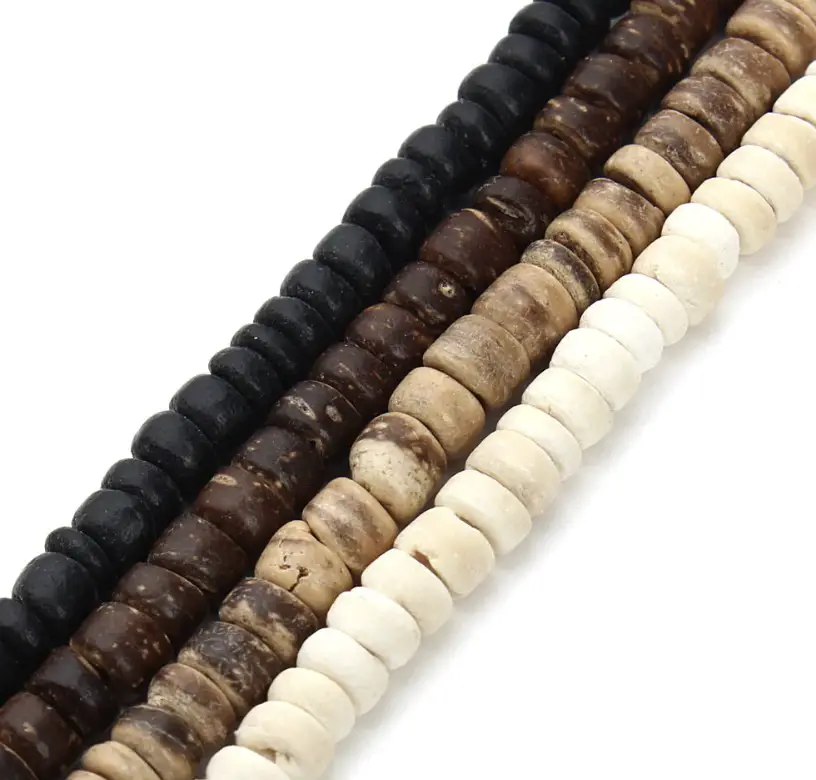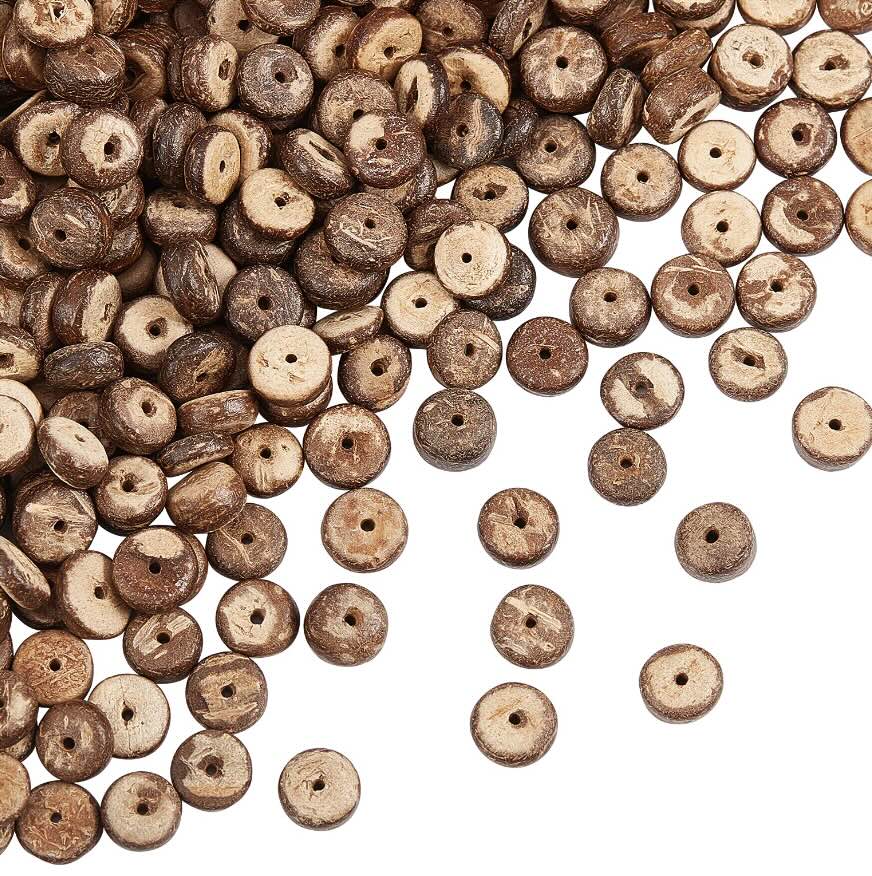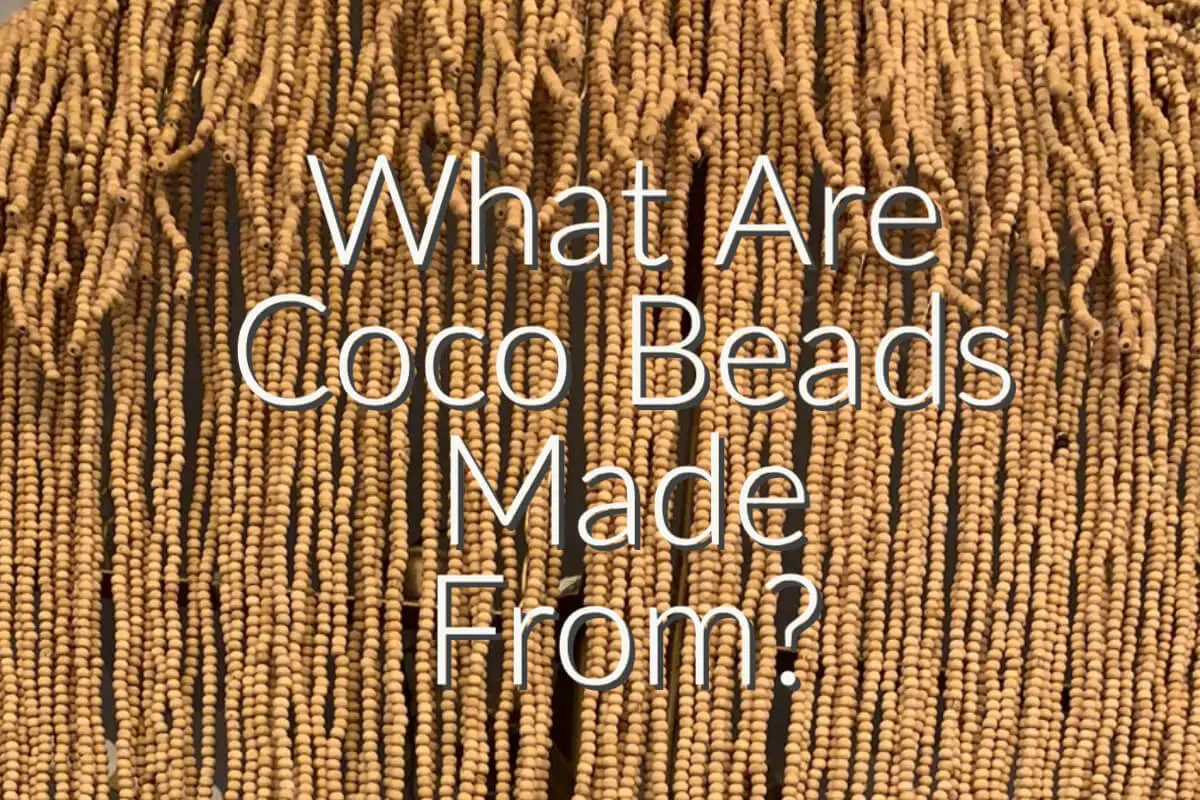Coco beads are beads that are used mainly for jewelry production and home decor. Because they are such unique beads, it is interesting to learn how they are made.
Coco beads are made from the outer shell of the natural coconut. The coco beads are shaped, cut into various sizes, and polished to give a natural look and feel. The beads are usually strung together to produce various products, including jewelry and home decor lighting.
Table of Contents
- 8 Intriguing Insights into Coco Beads
- 1. Coco Beads Are Made From The Coconut
- 2. Each Coco Bead Is Cut Into Different Shapes and Sizes
- 3. Coco Beads Are Handmade
- 4. Coco Beads Come From An Abundant Natural Resource
- 5. Coco Beads Are Made With A Renewable Resource
- 6. Coconuts Are Found Around the World.
- 7. Coco Beads Pair Well With Other Materials
- 8. Coco Beads Make Great Home Decor Products
- 10 Fascinating Tidbits: From Coconut Trees to Coco Beads and Shells
- Frequently Asked Question
- Related Content
8 Intriguing Insights into Coco Beads
Coco beads, with their natural charm, serve as the unsung heroes in jewelry and home décor. Their distinctive character offers a glimpse into the marvelous artistry behind their creation.
Coco beads are a natural and renewable resource; coconut trees are abundant worldwide. This makes them a unique choice for home decor products.

Here’s a deeper dive into the world of coco beads:
1. Coco Beads Are Made From The Coconut
Cocoa bead gets its name from the word coconut. This is because the beads are made from discarded coconut shells.
The cocoa bead uses the outer brown part of the shell to make the bead; this part of the shell is known as the husk-coir of the coconut. The inner part, such as coconut milk or meat, can be used to make coconut oil or for eating and drinking.
2. Each Coco Bead Is Cut Into Different Shapes and Sizes
The Coco Beads are cut in a variety of shapes and sizes. The only limitation to the size of the bead is the size and the curved shape of the natural coconut shell. Some of the most common shapes for coconut coco beads are disk, oval, or round.
Because the coconut shells are small, the coco beads are usually smaller. Each Coco bead is cut out of the coconut shell and then individually polished and finished.
Once the Coco bead has been cut and polished, various finishes can be placed on the Coco beads. Some of the more common coco bead colors are the natural coconut shell brown color, a white or medium brown.
3. Coco Beads Are Handmade
Coco beads are a handmade product. The Coco beads are made by hand; the Coco beads’ manufacturing requires a lot of handwork in cutting, polishing, and stringing the beads.
Coco beads are a natural handmade bead resource. They are a great bead you can use in the production of jewelry or home decor products.

4. Coco Beads Come From An Abundant Natural Resource
Coco beads are made from an abundant natural resource. Coco beads are not made with plastic or any other type of synthetic resource; instead, they are made from completely natural resources – the shell of the coconut.
In most parts of the world, coconut is extremely abundant. So much so that many use the coconut’s water and meat to process food or other things but toss away the outer coconut shell.
With Coco beads, this once discarded coconut shell can now be used to make these beautiful coco beads; no part of the coconut is left unused when the coconut is processed.
5. Coco Beads Are Made With A Renewable Resource
Coconut is also considered a renewable resource; Coco beads are made from the Coconut shell, so they fall into the category of being made with a renewable natural resource. This is because there is an abundance of coconuts in many parts of the world.
A renewable resource is a resource that can be used repeatedly and does not run out of supplies because it can naturally be replaced. Coconuts fall into that category as so many areas of the world grow coconuts, and coconuts can be easily replaced.
6. Coconuts Are Found Around the World.
Coconuts grow throughout the world. Many coconuts grow in Asia’s subtropical coastal regions, such as Vietnam, Philippines, Sri Lanka, Thailand, Indonesia, Myanmar, and part of China.
Coconuts are also prominent in Oceania, the Polynesian islands, and many parts of Africa. Coconuts also grow in parts of Australia and even the Caribbean. In the United States, coconuts are found in Florida and the Hawaiian Islands.
Coconuts grow best in tropical climates with abundant rainfall and warm temperatures. You will probably find some form of coconut growing anywhere in the world with this kind of climate.
7. Coco Beads Pair Well With Other Materials
The great thing about the Coco beads is their versatility. They can be used together with other materials; for example, coco beads look great on a chandelier with a matt brass finish.
You can also combine them with some other beads, such as a mother pearl or some natural agate beads. If you’d like to find out more about some of the agate beads you could read the blog Natural Agate Stone Beads For Home Decor Products by clicking here.
8. Coco Beads Make Great Home Decor Products
Coco beads make some great home decor products, especially some lighting. The beads are strung together to make a variety of different types of lighting. The coco bead chandeliers will also give us an excellent shine when the lightbulb is lit.
The coco beads can be hung on a string or sewn together to make the coco bead lighting. The difference between the string and sewing together the Coco beads shows how versatile they are and how many different ways you can use them.
We really love the Coco bead look for home decor; this look fits right into the new trend for natural products and people desiring to have natural elements in their homes. Having a lighting fixture or a chandelier with the Coco beads is a great way to bring that natural look into your home.

10 Fascinating Tidbits: From Coconut Trees to Coco Beads and Shells
The coconut tree, often dubbed the “Tree of Life,” is a marvel of nature, offering a plethora of uses and benefits.
Here are ten captivating facts spanning from the majestic coconut tree itself to the intriguing coco beads and shells:
- Versatile Tree: Every part of the coconut tree has a use – from its leaves (for roofing or weaving) and sap (to produce drinks like toddy) to its oil (for cooking and cosmetics).
- Global Reach: Coconut trees are grown in over 90 countries worldwide, with Indonesia, the Philippines, and India being the top producers.
- Floating Seeds: Coconuts can float in water due to their fibrous husk. This ability allows them to disperse across oceans and germinate on distant beaches.
- Natural Water Filter: The husk of the coconut, with its fibrous nature, is used in some places as a natural water filter, removing impurities as the water passes through.
- Coco Beads’ Origin: Coco beads are crafted from the shells of coconuts. After removing the edible flesh, the shells are repurposed into these decorative beads.
- Artistry at Play: Crafting coco beads involves a meticulous process of shaping, cutting, and polishing the coconut shell, often requiring skilled craftsmanship.
- Eco-Friendly Decor: Coco beads, with their natural origin and biodegradability, are an eco-friendly alternative in the world of jewelry and home decor.
- Sturdy Shells: Coconut shells are extremely hard, making them suitable for various crafts beyond just beads, such as bowls, cups, and musical instruments.
- Carbon Source: Activated carbon, widely used in air and water purification processes, can be produced from coconut shells due to their high carbon content.
- Cultural Significance: The coconut tree, along with its fruits and shells, holds significant cultural and religious importance in many societies. It’s often used in rituals, ceremonies, and offerings.
From providing nourishment and hydration to inspiring art and crafts, the coconut tree and its derivatives continue to amaze and serve humanity in countless ways.
If you want to learn more about Coco beads and how Mondoro can help you create, develop, and manufacture excellent home decor and furniture products, feel free to contact us.
Find out more about how Mondoro can help you create, develop, and manufacture excellent home decor and furniture products – don’t hesitate to contact me, Anita. Check out my email by clicking here or become a part of our community and join our newsletter by clicking here.
Mondoro gives out a FREE Lookbook to anyone interested. You can receive a copy of our latest Lookbook by clicking here.
Listen to our Podcast called Global Trade Gal. You can find it on all major podcast platforms. Try out listening to one of our podcasts by clicking here.
Subscribe to our Mondoro Company Limited YouTube Channel with great videos and information by clicking here.
Frequently Asked Question
What are coco beads?
Coco beads are beads made from the outer shell of the natural coconut. They are shaped, cut into various sizes, and polished to achieve a natural look and feel.
How are coco beads made?
Coco beads are made by cutting and shaping the outer shell of coconuts into bead-like forms. These beads are then polished to enhance their natural appearance.
What sizes are coco beads available in?
Coco beads come in various sizes, allowing for versatility in jewelry and home decor designs. You can find them in small, medium, and large sizes, depending on your preferences and requirements.
What is the appearance of coco beads?
Coco beads have a beautiful natural look. They typically have a brown color, and the polishing process enhances their smoothness and shine.
What kind of products can be made with coco beads?
Coco beads can be used to create a wide range of products, including jewelry such as necklaces, bracelets, and earrings. They are also commonly used in home decor items like lighting fixtures and curtains.
Are coco beads eco-friendly?
Yes, coco beads are considered eco-friendly because they are made from the outer shell of coconuts, which is a natural and sustainable resource. Using coco beads in crafts and designs promotes the utilization of renewable materials.
Are coco beads suitable for people with sensitive skin?
Coco beads are generally safe for people with sensitive skin. However, individual reactions may vary, so it’s always a good idea to test the beads against your skin before wearing them for extended periods.
How can I clean coco bead jewelry?
To clean coco bead jewelry, you can gently wipe the beads with a soft cloth dampened with mild soap and water. Avoid submerging the beads in water or using harsh chemicals, as this may damage their natural finish.
Related Content
Why Is It Called Mother Of Pearl?
The name mother used in Mother of Pearl is thought to come from a nearly obsolete meaning of mother, which means “scrum, drugs or leftover fifth.” This would be because the Mother of Pearl comes from the leftover shell of the oyster, clam, or mussel. The scientific name for Mother Of Pearl is nacre.
You can learn more by reading our blog Why Is It Called Mother Of Pearl? Pearls and Mother of Pearls by clicking here.
How Do You Make A Bamboo Lamp Shade?
To manufacture or make bamboo lampshades, you need to 1) properly prepare the bamboo materials, 2) build a metal frame, 3) wrap the metal frame, 4) secure the bamboo on to the metal frame, 5) spray color on top of the bamboo shade if you desire the lampshade to be a color other than natural and 6) spray a top coat on the entire shade to protect the bamboo shade’s finish.
You can discover more by reading our blog How Do You Make A Bamboo Lamp Shade? All About Bamboo Lampshades by clicking here.


